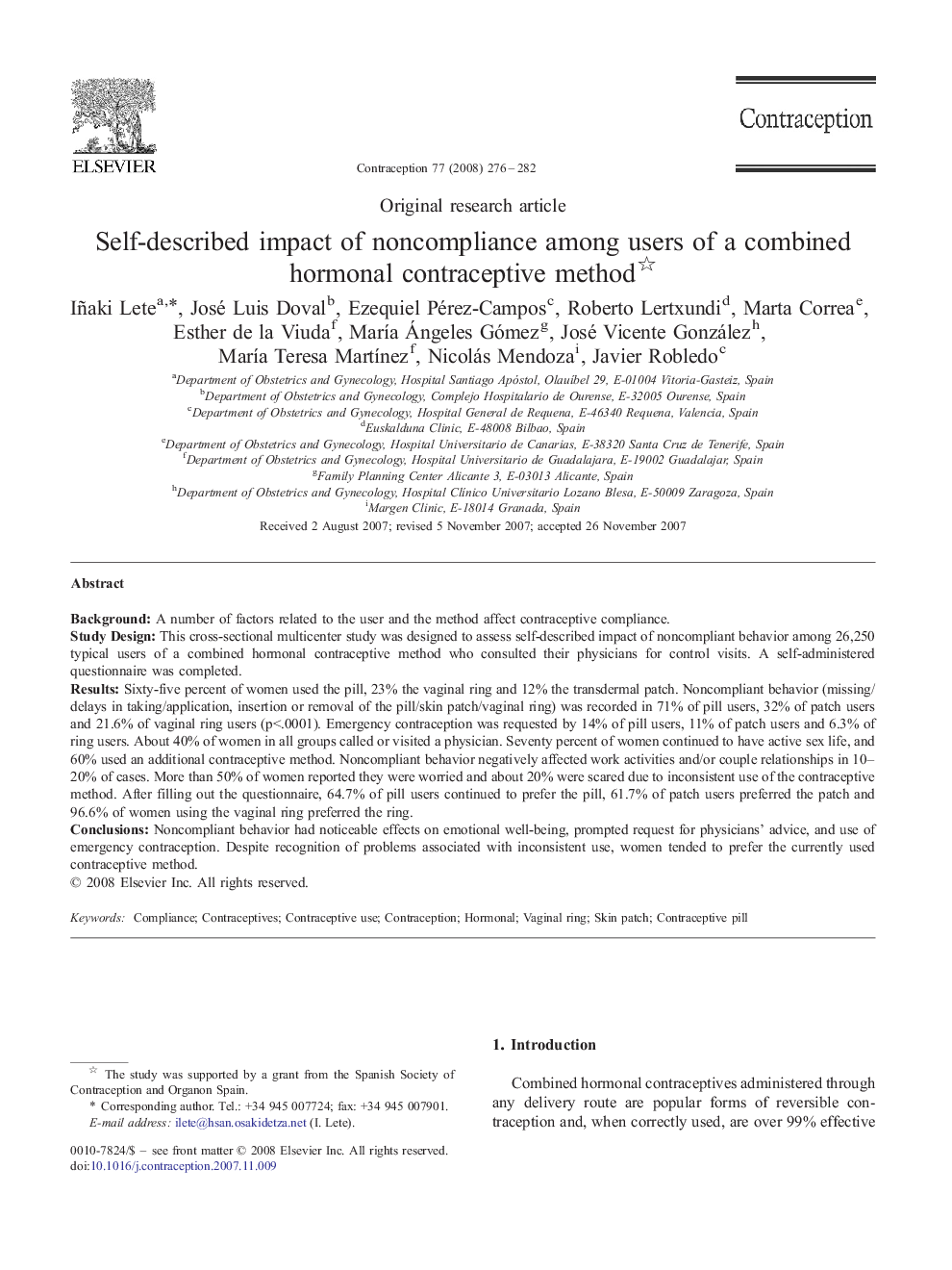| Article ID | Journal | Published Year | Pages | File Type |
|---|---|---|---|---|
| 3915723 | Contraception | 2008 | 7 Pages |
BackgroundA number of factors related to the user and the method affect contraceptive compliance.Study DesignThis cross-sectional multicenter study was designed to assess self-described impact of noncompliant behavior among 26,250 typical users of a combined hormonal contraceptive method who consulted their physicians for control visits. A self-administered questionnaire was completed.ResultsSixty-five percent of women used the pill, 23% the vaginal ring and 12% the transdermal patch. Noncompliant behavior (missing/delays in taking/application, insertion or removal of the pill/skin patch/vaginal ring) was recorded in 71% of pill users, 32% of patch users and 21.6% of vaginal ring users (p<.0001). Emergency contraception was requested by 14% of pill users, 11% of patch users and 6.3% of ring users. About 40% of women in all groups called or visited a physician. Seventy percent of women continued to have active sex life, and 60% used an additional contraceptive method. Noncompliant behavior negatively affected work activities and/or couple relationships in 10–20% of cases. More than 50% of women reported they were worried and about 20% were scared due to inconsistent use of the contraceptive method. After filling out the questionnaire, 64.7% of pill users continued to prefer the pill, 61.7% of patch users preferred the patch and 96.6% of women using the vaginal ring preferred the ring.ConclusionsNoncompliant behavior had noticeable effects on emotional well-being, prompted request for physicians' advice, and use of emergency contraception. Despite recognition of problems associated with inconsistent use, women tended to prefer the currently used contraceptive method.
